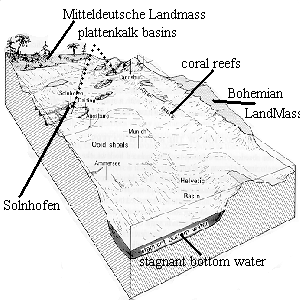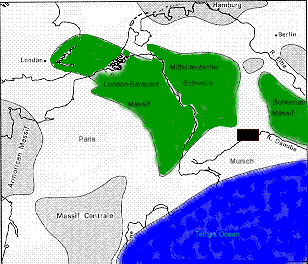

| This drawing shows one artists rendition of what the Solnhofen Lagoon and other lagoons that existed at that time, may have looked like during the Jurassic. The lagoon is located on the left side of the image almost near the top (modified from Barthel et. al., 1990). |  |

| This map shows estimated position of the land and oceans were located in the Jurassic Period (modified from Barthel et. al., 1990). |
